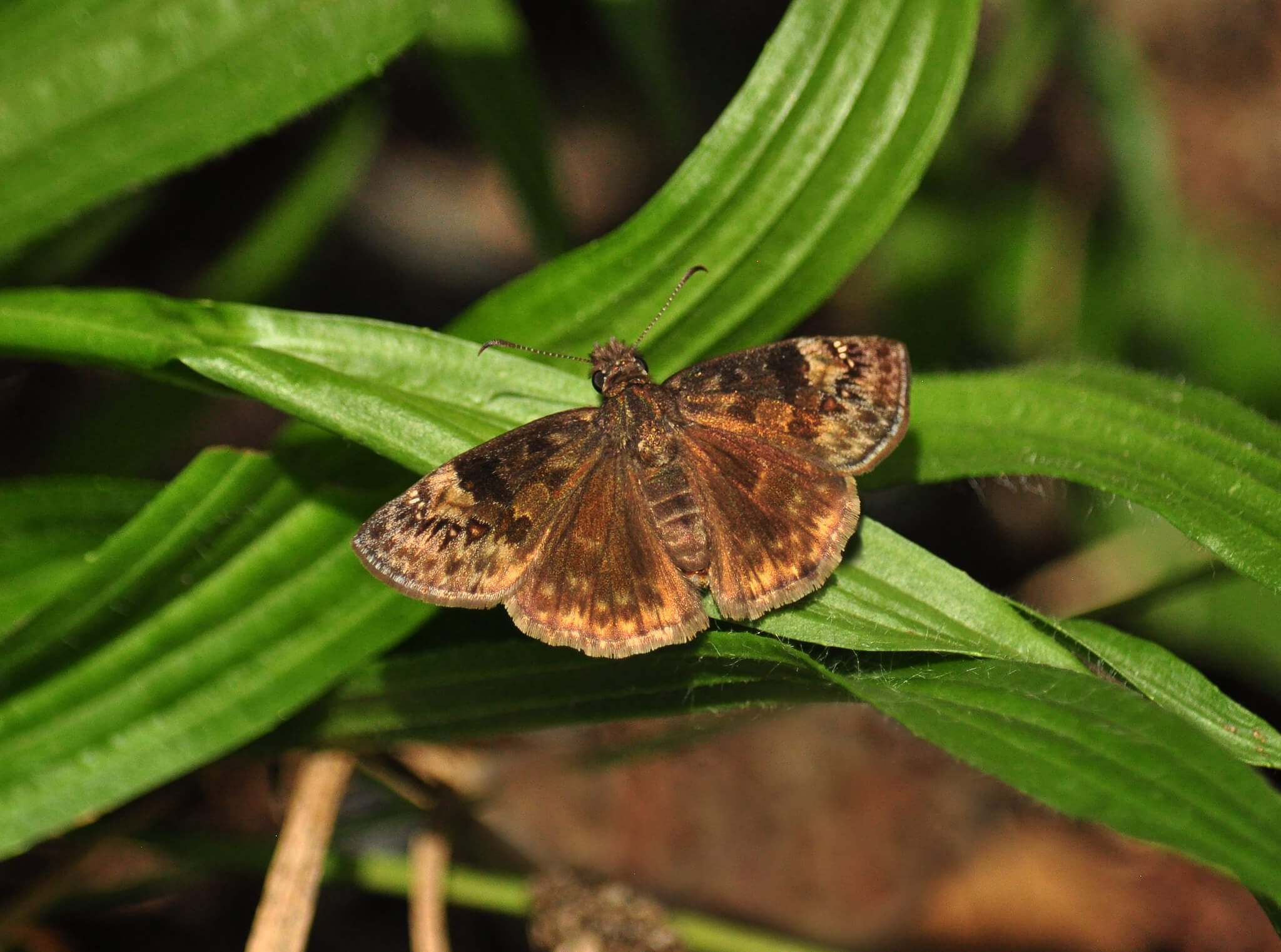Blue False Indigo (Baptisia australis)
Blue False Indigo (aka Blue Wild Indigo) is one of my favorite plants! It has great purplish-blue flowers which the bumble bees love to get into. It is the host plant for the Wild Indigo Duskywing and 17 other species of butterflies and moths in our area (nwf.org). Blue False Indigo is beneficial to the threatened Persius dusky wing (mnfi.anr.msu.edu) and possibly the Frosted Elfin (mnfi.anr.msu.edu). Give this plant some time and it will pay off with great flowers, unique long-lasting foliage, and some fall/winter interest with its large dark seed pods. I highly recommend this plant, even if there are some questions as to whether it is a true Michigan native or nearly native.
Photo credit: John Blair 2; Wild Indigo Duskywing, 3; Clouded Sulphur
Blue False Indigo (aka Blue Wild Indigo) is one of my favorite plants! It has great purplish-blue flowers which the bumble bees love to get into. It is the host plant for the Wild Indigo Duskywing and 17 other species of butterflies and moths in our area (nwf.org). Blue False Indigo is beneficial to the threatened Persius dusky wing (mnfi.anr.msu.edu) and possibly the Frosted Elfin (mnfi.anr.msu.edu). Give this plant some time and it will pay off with great flowers, unique long-lasting foliage, and some fall/winter interest with its large dark seed pods. I highly recommend this plant, even if there are some questions as to whether it is a true Michigan native or nearly native.
Photo credit: John Blair 2; Wild Indigo Duskywing, 3; Clouded Sulphur
Blue False Indigo (aka Blue Wild Indigo) is one of my favorite plants! It has great purplish-blue flowers which the bumble bees love to get into. It is the host plant for the Wild Indigo Duskywing and 17 other species of butterflies and moths in our area (nwf.org). Blue False Indigo is beneficial to the threatened Persius dusky wing (mnfi.anr.msu.edu) and possibly the Frosted Elfin (mnfi.anr.msu.edu). Give this plant some time and it will pay off with great flowers, unique long-lasting foliage, and some fall/winter interest with its large dark seed pods. I highly recommend this plant, even if there are some questions as to whether it is a true Michigan native or nearly native.
Photo credit: John Blair 2; Wild Indigo Duskywing, 3; Clouded Sulphur
Life Cycle: Perennial
Sun Exposure: Full, Partial shade
Soil Moisture: Medium, Medium-dry
Height: 4 feet
Plant Spacing: 2-3 feet
Bloom Time: May-July
Bloom Color: Purplish-blue
Advantages: Pollinator Favorite, Bird Favorite, Deer Resistant, Great landscaping plant
Host Plant: Wild Indigo Duskywing, Clouded Sulphur, and 16 other species of butterflies and moths use this as a caterpillar host plant in our area (nwf.org)
Beneficial for Endangered or Threatened Species: Possibly the Frosted Elfin (mnfi.anr.msu.edu), Persius dusky wing (Erynnis persius persius) (mnfi.anr.msu.edu)







